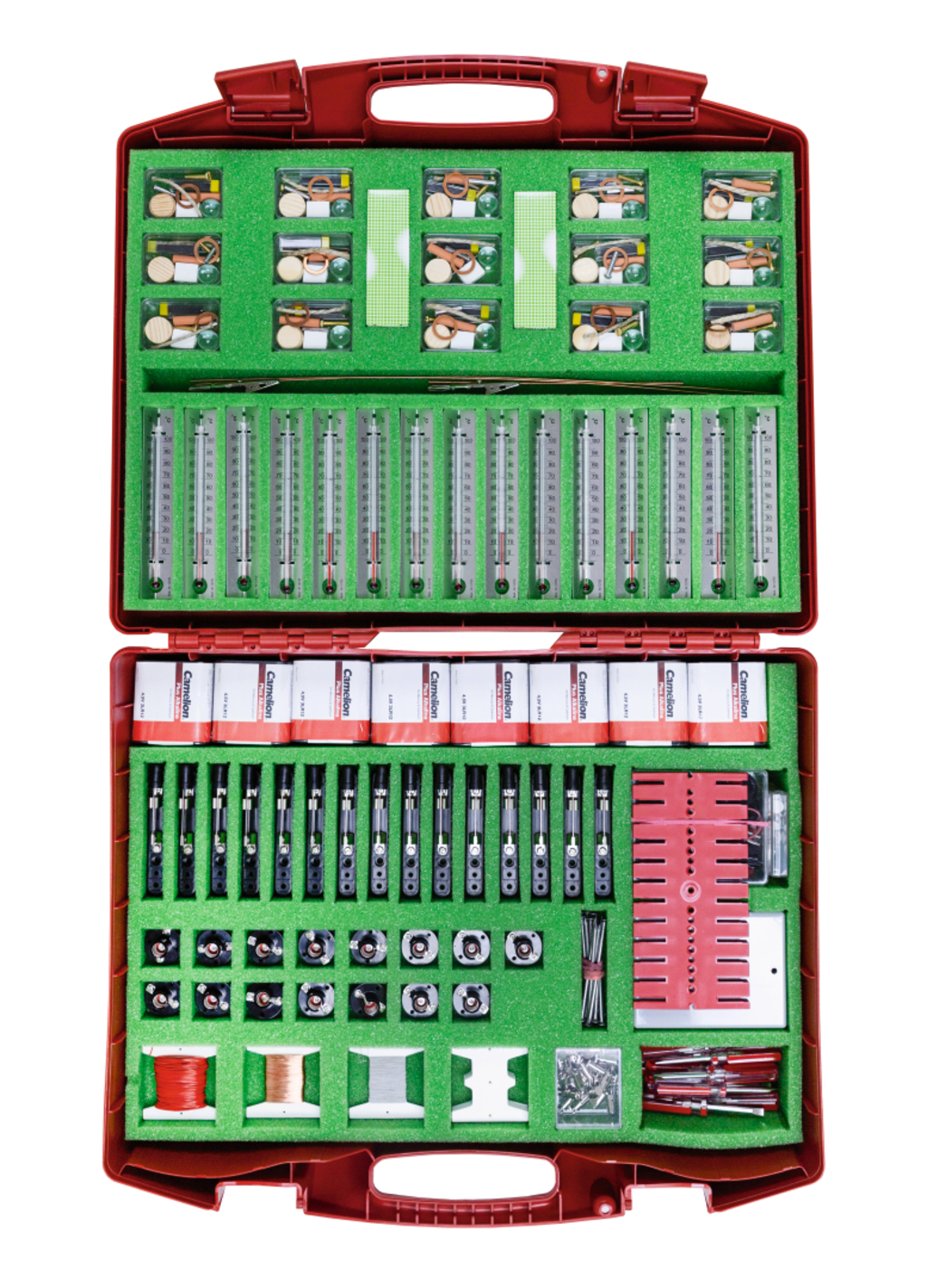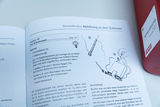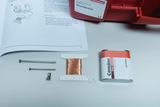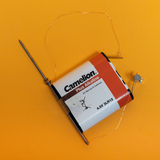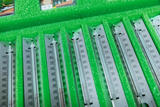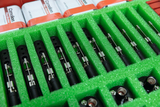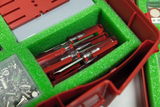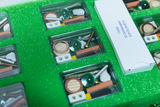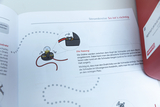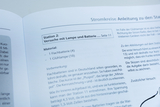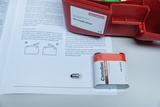Students kit Electrical circuits
Children experience electricity everywhere in their everyday life. This kit helps to explain how electricity is used to produce light, heat and motion.
Children will also learn that electricity can flow under certain conditions only.
The topics covered include the following:
- Open and closed circuits
- Series and parallel connections
- Conducting and non-conducting materials
- Dangers of electric current
- How electricity gets to your home
Teacher’s manual ‘Experiments in workstations: Electric circuits’
With copy templates covering 33 workstations
Age 9-10
Materials for up to 33 workstations (for 33 children at least)
Technical specifications
Size of kit: 540 x 450 x 150 mm
The children repeat the insights about handling batteries and light bulbs from station 2 and they learn to assess the condition of batteries.
The children usually bring the “old” batteries they need from home. On average, five dead batteries can be found there. Since the "residence time" of batteries in households is four years on average according to the statistics of the GRS battery take-back service, it is conceivable that copies that have already "expired" are brought along.
The aim of these two stations is to become aware of how many lamps can be found in our households and the different shapes they have.
In terms of goals, this suggestion is similar to Station 15, but the technical problem lies less in the stability of the connections than in the narrowness of the pencil case. Even if you have partially cleared them out, the binding posts are not easy to attach in such a way that they fit in your pocket and do not cause a short circuit.
The children build a milk carton ship out of a milk carton, which they lower into the water (in a tub).
The installation of lighting in vehicles (station 18) always awakens the desire to mount two lamps. This created a motivating situation to deal with series and parallel circuits.
With the double-sided station sheet 20, the children practice something very important, troubleshooting.
This suggestion complements the experimental setup of Station 16.
It is a worthwhile task to realize how many switches one encounters at home - Station 22 encourages this.
Here, what the children recognized from the lever switch in the box is transferred to three switch types that are common in the household: a “gap” in a circuit is always closed or opened.
The children get to know heating wires and test them out on a pole plate.
The "trembling roller coaster" is called that because of its shape and because you need a steady hand if you don't want to light up the lamp while you are guiding the loop along the track. The very making of this game leads to an exploration of the simple electric circuit. The point of using it is not to close the circuit.
If you touch the pole plate with the free end of the wire, the wrapped nail becomes magnetic - it has become an electromagnet. From this you can make different games ... With it you can z. B. Carefully pick up another nail. If the current flow is interrupted, the magnetic force is released and the "load" falls off when it is heavy enough.
Children are encouraged to light up the lightbulb in different ways. This task has two solutions, once the long pole sheet (minus) touches the contact plate and the short pole sheet (plus) touches the thread and vice versa.
With this text about Alessandro Volta, a recurring framework plan requirement is met, to acquaint the children with "researchers" and "inventors" or even namesakes.
Children who deal with Station 11 in partner work develop an elementary school idea of what is happening in the battery. It will be deepened later in secondary school.
The suggestion encourages the children to set up a simple electrical circuit and make it so stable that it works safely even with violent movements.
The "test" leads to a lasting examination of the children with the question of the technically correct, mechanically stable connection of the lamp.
Many outline plans suggest building your own switches. The children can make or apply elementary experiences. The station sheet encourages you to try out two different switch types, the rotary switch and the button.
The children study bicycle lighting technology.
The aim of dealing with this text is to know the danger that comes from currents over 9 volts. In many cases, they are referred to in writing.
To answer this question experimentally, the substances contained in the collection of small items are tested. The station sheet shows which material is involved.
- 1 × Copper wire, half-hard 2 mm Ø (200 mm long)
- 2 × Copper wire, supple 1,5mm(450 mm long)
- 1 × Plastic base, grey with two terminals, 120x90 mm
- 1 × Plastic case ca.540x450x150 mm
- 1 × Storing diagram,int.vers.
- 1 × Foam insert 2 for 31772, 515x360x70 mm
- 1 × Foam insert 1 for 31772, 515x350x55 mm
- 2 × Crocodile clip with 4 mm plug
- 1 × Wooden board, 120x90 mm
- 1 × Glue, paper clips and thumbtacks in a small box
- 1 × Construction set for vehicle
- 15 × Set of assorted material samples
- 1 × Heating wire , covered, 0,20 mm Ø (20 m)
- 1 × Copper wire varnished, 0,25 mm Ø (60 m)
- 1 × Copper wire with insulation (20 m)
- 7 × Spool for keeping wire, 60x60 mm
- 15 × Knife switch, single polesingle throw
- 15 × Screw driver 110 mm
- 32 × Terminal clip, 7 mm (Pole clamp)
- 15 × Bulb holder MES
- 2 × Bulb MES 3,5 V / 0,2 A (10 pcs.)
- 15 × Battery cell, 4,5 V 3R12
- 15 × Thermometer student type –3°C to +103°C
- 1 × Plastic box 60x50x30 mm
- 1 ×
- 1 ×
- 1 ×
